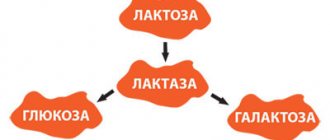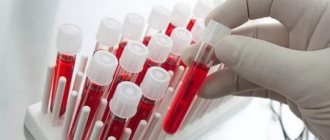Poliomyelitis is a highly contagious viral disease that causes paralysis of the arms, legs, and breathing, and can also cause death. Poliomyelitis pathogens penetrate the oral mucosa mainly through contaminated water. Infection by airborne droplets is also possible.
Poor hygiene conditions favor transmission. The incubation period ranges from 3 to 35 days. After a person gets sick, he develops lifelong immunity (protection against infection) to one viral type (but there are polioviruses types 1, 2 and 3). Only vaccination completely protects against infections of all three types. You can get vaccinated against polio at the RebenOK clinic at the best prices in Moscow.
Why is polio dangerous?
Most infections (>95%) are asymptomatic, but antibodies are produced. If there are signs of illness, there are different pictures of the disease:
· Abortive polio: inflammation of the gastrointestinal tract (gastroenteritis), fever, nausea, sore throat, muscle pain and headaches without central nervous system involvement.
· Non-paralytic poliomyelitis (aseptic meningitis): inflammation of the meninges without paralysis.
· Paralytic polio (1 in 200 infections) with typical symptoms of paralysis: independent breathing may become impossible and lifelong use of mechanical ventilation may be required. Paralysis can also lead to death.
Even decades after infection, post-poliotic syndrome may occur. There is no cure for polio. Only symptomatic therapy is prescribed to eliminate discomfort.
Types of vaccines
Various vaccines are available, which are administered by a doctor using a syringe in several single doses. Polio vaccination for infants is often combined with other vaccines. The combination vaccine is distributed over four single doses: the first is given to infants at the age of 3 months, the last - in the second year of life.
Types of polio vaccines:
· Vaccination with OPV (oral polio vaccine).
It comes in the form of drops and contains weakened forms of two types of viruses. Passive immunity is produced in the intestines.
· Vaccination IPV (inactivated vaccine).
It has the form of a homogeneous suspension, available in disposable 0.5 ml syringes. It contains three types of “dead” viruses.
OPV is cheaper. The drug is produced in Russia and has good reviews. Inactivated polio vaccine is an imported product. The drugs have certain differences and have their own side effects and positive aspects.
The RebenOK clinic uses several drugs. Names of the polio vaccine:
· "Pentaxim". Designed for children from three months of age. The national vaccination schedule involves three injections with an interval of one and a half months and further revaccination after a year. The second revaccination (fifth administration of the drug) is carried out with OPV or IPV.
· "Bivouac Polio". Live polio vaccine, which consists of three doses of a weakened oral vaccine and two doses of an inactivated vaccine. It is carried out in the first year of life. Booster vaccination against polio is carried out one year after receiving the first dose.
· "Infarix Hexa". A combined drug that does not have strict preparation requirements. The vaccine is effective against polio, tetanus, diphtheria, whooping cough, Haemophilus influenzae, and hepatitis B.
· "Polimilex". A single drug that is widely used for the prevention of polio. Injected subcutaneously or intramuscularly. The drug is “dead”, so it cannot cause the development of the disease.
The choice of drug remains with the doctor. Many experts prefer to use combination vaccines. If a child has contraindications, then single medications are prescribed.
Current state of the problem
According to Rospotrebnadzor, in 2019-2020, outbreaks of polio were observed in Ethiopia, Congo, the Philippines and a number of other African countries. Due to the lack of vaccination, there is still a high probability of epidemics in Iran, Iraq, Ukraine, Syria and many others.
ON A NOTE! In 2002, as a result of the actions of anti-vaxxers, residents of Tajikistan were “freed” from polio vaccination; it became optional. As a result, only a small proportion of children were able to receive the vaccine. In 2010, the country was faced with an outbreak of morbidity - the infection was brought from India, more than seven hundred children were infected, and 21 children died. Only thanks to international assistance, drugs were quickly brought into the country and almost three million children were immunized. (according to RIA Novosti)
In Russia, there is no talk of a mass spread of polio yet, and this is only thanks to vaccination. However, more and more often in the news there are reports of outbreaks of the disease among visitors (for example, from Chechnya), as well as data from Rospotrebnadzor on cases of vaccine-associated polio.
Meanwhile, scientists predict an epidemic situation in the near future. This is due, firstly, to the mutation of the virus, secondly, to the cyclical nature of its activation (about 12-15 years), and thirdly, to the lack of literacy of modern young parents. Considering the polio vaccine to be a “relic of the past,” and the disease itself long forgotten and eradicated, they refuse to vaccinate their children, exposing them and those around them to terrible danger.
In connection with the above, every parent should think carefully before refusing vaccination. This behavior endangers the health and life of not only your child, but also those around you. After all, it is only thanks to vaccinated children that the pathology does not manifest itself aggressively, and unvaccinated children grow up not knowing what polio is.
Advantages and disadvantages
Polio vaccination is usually given in infancy as part of basic immunization, along with the other five routine vaccinations. Poliomyelitis is a serious infectious disease, which in its development stage leads to disability if the gray matter of the spinal cord is damaged. Benefits of polio vaccination:
· allows you to avoid infection and prevent disability, skeletal deformities and paralysis;
· the vaccinated person develops immunity from the disease, so even if infected, the child will tolerate the disease much easier;
· Adverse reactions after vaccination are mostly absent.
Many believe that the vaccine has shortcomings that result in the development of the disease polio. But the probability of such an outcome is no more than 1 case in 2.7 million people.
Vaccination is not dangerous to the life and health of the child. The goal is to protect against future infection by creating a barrier against infection. The most harmless is the inactive vaccine.
Disease history
The second name of polio is infantile spinal paralysis, which affects children aged 5 months to 6 years. Poliomyelitis
is a highly contagious disease. It is caused by a polyvirus that can be transmitted by airborne droplets, insects, and dirty hands or food. Moreover, the polyvirus can exist in the external environment for almost six months; it tolerates drying and freezing well.
What is immunity
Immunity protects not only from microbes, but also from everything foreign in general: parasites, viruses, foreign tissues, and even one’s own cells altered by the oncological process. Alexey Agafonov, a researcher at the allergology department of the clinic of the Institute of Nutrition of the Russian Academy of Medical Sciences, talks about how immunity works.
If a person has had polio asymptomatically, he becomes invisible to others, but a very dangerous
carrier of the infection
.
The polio virus infects
the gray membrane of the spinal cord and motor nerve cells. Most often, the disease ends in the death of some nerve cells, paralysis of individual muscle groups and their atrophy. In most cases, a person who has recovered from polio becomes severely disabled.
Adverse reactions
The combination polio vaccine, often used in infants, is generally well tolerated. There may be redness or painful swelling at the injection site. Allergic reactions are also possible.
As the immune system reacts to the vaccine, it may temporarily cause various illnesses. These include, for example:
· headaches and aches;
· gastrointestinal discomfort;
· fever and fatigue;
· irritability and chills.
These vaccination reactions usually resolve on their own within 1-3 days.
Is there a fever after vaccination?
Children may develop a fever after receiving the polio vaccine. This reaction is considered normal and indicates that the body has begun to produce antibodies necessary to fight the virus. A slight increase in body temperature is observed in 1-4% of patients. The temperature may rise to 37.5-38.6 degrees. If the readings exceed a moderate level, then you should take an antipyretic drug.
DESCRIPTION OF THE MEDICINE
The Polimileks vaccine is a suspension of polio viruses types 1, 2 and 3, cultured on the VERO cell line, purified and then inactivated with formaldehyde
Appearance: Transparent orange-yellow to orange-red liquid. Pharmacotherapeutic group: MIB 1 - vaccine ATC CODE: J07BF03
Immunological properties
The use of the Polymilex vaccine in humans causes the formation of antibodies and immunological memory. Administration of the second dose of the vaccine causes a secondary response characterized by a rapid increase in antibody levels, indicating the existence of immunological memory.
How many vaccinations are given against polio?
The Russian national vaccination calendar provides the following polio vaccination schedule:
· in the 1st year of life – at 3,4,5 and 6 months;
· in the 2nd year of life – at 18 and 20 months;
· at the age of 14 – once.
In accordance with the Russian calendar, the first two vaccinations are carried out with IPV, the third – with OPV. The vaccination course involves the use of only inactivated vaccines. When two doses of OPV are administered, it is possible to provide high local protection in the intestine. With continued use of live vaccines, the risk of developing vaccine-associated poliomyelitis is reduced.
Are there any restrictions
In some cases, vaccination cannot be done. Contraindications to immunization against polio:
- pregnancy;
- immunodeficiencies of various origins;
- allergy to the components of the drug (neomycin, streptomycin);
- severe reaction to a previous vaccination;
- colds, acute respiratory infections;
- exacerbation of chronic diseases.
In the last two cases, vaccination should be postponed until complete recovery. In a state of reduced immunity, vaccination can cause negative consequences.
Children with immunodeficiency cannot receive a vaccine based on live strains of the virus (OPV). In this case, the possibility of vaccinating them with an inactivated vaccine (IPV) is being discussed.
Tips for parents
If a child often has allergic reactions or is allergic, then vaccination is possible only during the period of remission. There is no need to use any medications before administering the vaccine.
If your child experiences the following symptoms after vaccination, you should consult a doctor:
· appearance of signs of acute respiratory infections (runny nose, cough, etc.);
· dysfunction of the gastrointestinal tract;
· shortness of breath, decreased muscle tone of the limbs.
We are talking about signs of vaccine-associated polio, which may appear 4-30 days after OPV administration. A visit to the pediatrician is necessary if there is an irregular heartbeat, urticaria or severe headaches.
After vaccination, it is recommended to avoid visiting crowded places. The child should be given more purified water to drink, and allergenic foods should be excluded from the diet.
Preparing for vaccination
DTP and polio vaccinations are carried out comprehensively at the age of 3 months. The main requirement is that the child must be absolutely healthy! If parents have any doubts about the health of their child, it is better to postpone the vaccination day to a later date. If the baby has an allergic reaction, then you need to inform your doctor about this and also reschedule the vaccination.
Before vaccination, you must be examined by a doctor and obtain permission from a specialist.
Warning for the unvaccinated
The stated goal of the World Health Organization (WHO) is to eradicate polio, and Russia is also committed to this goal. However, polio is still found in Pakistan, Afghanistan or Nigeria and can also be carried by tourists into the Russian Federation. Therefore, polio vaccination is still recommended, important and necessary.
Everyone should be vaccinated against polio, ideally as early as infancy. People who were not vaccinated as children, or whose vaccination status is unknown, should catch up on polio vaccination.
MANUFACTURER
Bilthoven Biologicals B.V., the Netherlands Antonie van leeuwenhoeklaan 9-13 3721 MA Bilthoven The Netherlands or OOO Nanolek Russia 612079, Kirov region. Orichevsky district, town. Levintsy, Biomedical complex "NANOLEK".
Packaging (primary packaging)
Bilthoven Biologicals B.V., the Netherlands Antonie van leeuwenhoeklaan 9-133721 MA Bilthoven The Netherlands Or Nanolek LLC Russia 612079, Kirov region. Orichevsky district, town. Levintsy, Biomedical complex "NANOLEK".
Packager (secondary “consumer” packaging)
Bilthoven Biologicals B.V., the Netherlands Antonie van leeuwenhoeklaan 9-13 3721 MA Bilthoven The Netherlands or LLC "Nanolek" Russia 612079, Kirov region .. Orichevsky district, town. Levintsy, Biomedical complex "NANOLEK".
Quality control
Bilthoven Biologicals B.V., Netherlands or Russia 612079, Kirov region. Orichevsky district, town. Levintsy, Biomedical complex "NANOLEK".
Legal entity in whose name the registration certificate was issued: LLC "Nanolek" 127055, Moscow, Butyrsky Val, building 68/70, building 1, tel.: +7 (495) 648-26-87







